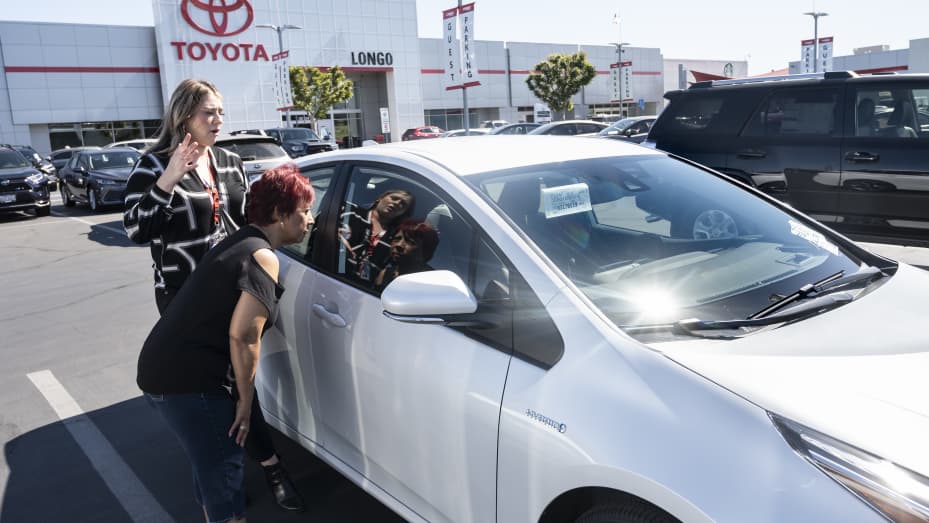To know if your car has gap insurance, check with your lender or leasing company as they will be able to inform you if there is a GAP Waiver Provision in your agreement. It’s important to reach out to them directly for clarification on your specific insurance coverage.
How To Determine If Your Car Has Gap Insurance
Gap insurance can be a valuable addition to your car insurance policy, providing financial protection in case your vehicle is deemed a total loss. But how do you know if your car already has gap insurance? Here are a few ways to find out:
Checking With Your Lender Or Leasing Company
If you financed your car or are leasing it, your lender or leasing company may have included gap insurance as part of your agreement. Contact them to inquire about any GAP Waiver Provision or additional coverage that may already be in place. They will be able to provide you with the necessary information to determine if your car has gap insurance.
Reviewing Your Car Insurance Policy
Take a look at your current car insurance policy to see if it includes gap insurance. This coverage is typically offered as an optional add-on by insurers. Look for keywords such as “gap coverage” or “loan/lease payoff” to identify if this protection is already included in your policy. If you are unsure, contact your insurance company directly to verify if you have gap insurance or if it is available as an option to add.
Contacting Your Insurance Company
If you are still uncertain whether your car has gap insurance, the best course of action is to reach out to your insurance company. They can provide you with the necessary information and help you understand the coverage options available to you. Give them a call or send an email to inquire about your gap insurance status.
By checking with your lender or leasing company, reviewing your car insurance policy, and contacting your insurance company directly, you can determine if your car already has gap insurance. Remember, this type of coverage can provide you with peace of mind and financial protection in case of a total loss, so it’s important to know if your car is already covered or if you need to add this valuable protection.

Credit: www.diamondcertified.org
Understanding Gap Insurance And Its Importance
Gap insurance is an important consideration for car owners, especially for those who have financed their vehicles. In the unfortunate event of a total loss or theft, gap insurance can help bridge the gap between what you owe on your car loan and the actual cash value of your car, ensuring that you are not left with a significant financial burden.
What Is Gap Insurance?
Gap insurance is a type of auto insurance that covers the “gap” between what you owe on your car loan and the actual cash value of your car. In other words, it protects you from being upside down on your loan in the event of a total loss or theft.
How Does Gap Insurance Work?
When you purchase a new car, it starts depreciating as soon as you drive it off the lot. If your car is stolen or deemed a total loss in an accident, your primary auto insurance will typically only cover the actual cash value of the vehicle at the time of the loss. This can leave you owing more on your loan than what your insurance will pay out. Gap insurance steps in to cover this remaining “gap” amount, ensuring that you are not stuck paying for a car that is no longer in your possession.
Difference Between Full Coverage And Gap Insurance
It’s important to note that gap insurance is not a substitute for traditional full coverage auto insurance. Full coverage typically encompasses liability insurance, collision insurance, and comprehensive insurance, providing protection for damages to your vehicle, injuries to others, and other covered perils. Gap insurance is an additional coverage that specifically addresses the gap between loan amount and actual cash value in case of a total loss or theft.
In conclusion, gap insurance is a valuable safeguard for car owners who have financed their vehicles. It provides financial protection in the event of a total loss or theft, ensuring that you are not burdened with paying off a car loan for a vehicle you no longer have. If you are unsure whether your car has gap insurance, it’s always best to check with your lender or leasing company to confirm the details of your coverage.
Factors To Consider When Deciding On Gap Insurance
To determine if your car has gap insurance, it’s best to check with your lender or leasing company. They can confirm if a GAP Waiver Provision is included in your agreement. Taking this step will help you understand the coverage you have and make informed decisions about your car insurance.
Financing Status Of Your Vehicle
One of the key factors to consider when deciding on gap insurance is the financing status of your vehicle. If you have financed your car through a lender or leasing company, it is important to check your agreement to see if they offer a GAP Waiver Provision. This provision may provide coverage for the “gap” between what you owe on your car loan and the actual cash value of your vehicle in the event of a total loss. Checking with your lender or leasing company will help you determine if you already have gap insurance or if you need to purchase it separately.
Loan-to-value Ratio
The loan-to-value ratio of your vehicle is another important factor to consider when deciding on gap insurance. This ratio represents the percentage of your car’s value that is covered by your loan. If you have a high loan-to-value ratio, it means that you owe a significant amount on your car loan compared to the value of your vehicle. In such cases, if your car is totaled, the insurance payout may not be enough to cover the remaining loan balance. Gap insurance can help bridge this gap and protect you from financial loss.
Down Payment Amount
The down payment amount you made when purchasing your vehicle also plays a role in determining the need for gap insurance. If you made a small down payment or no down payment at all, there is a higher chance of having negative equity in your car, especially in the early years of ownership. Negative equity occurs when you owe more on your car loan than the actual value of your vehicle. Gap insurance can provide coverage in such situations and protect you from owing money on a car that you no longer possess.
Vehicle Depreciation Rate
The rate at which your vehicle depreciates is another important factor to consider when deciding on gap insurance. Vehicles generally lose value over time due to factors such as age, mileage, and wear and tear. If your car depreciates at a faster rate, there is a higher chance that the insurance payout in the event of a total loss may be significantly lower than what you owe on your car loan. Gap insurance can help cover this depreciation gap and ensure that you are not left with a large amount of debt.
Duration Of Gap Insurance Coverage
To determine if your car has gap insurance, it’s best to check with your lender or leasing company. They can inform you if a GAP Waiver Provision is included in your agreement.
Length Of Gap Insurance Policies
Gap insurance is an additional coverage that you purchase in addition to your regular car insurance policy. It provides protection against the difference, or “gap,” between the amount you owe on your car loan and the actual cash value of your car if it gets totaled or stolen. But how long does this coverage last? The duration of gap insurance coverage can vary depending on several factors. Typically, gap insurance policies last for a limited period, usually until the loan balance is less than the value of the vehicle. This means that once the gap between the loan amount and the actual cash value of the car closes, you may no longer need gap insurance. Most drivers keep their gap insurance policies active for a year or two, until the loan balance decreases and the car’s value catches up. However, it’s important to note that each policy has its own terms and conditions, so it’s crucial to review the details of your gap insurance policy to understand its specific duration.Terminating Gap Insurance
Once the balance of your loan becomes less than the value of your vehicle, you can consider terminating your gap insurance coverage. At this point, having gap insurance may no longer be necessary since the loan balance is now covered by your regular car insurance policy. To terminate your gap insurance, you can contact your insurance provider or reach out to your lender or leasing company. They will guide you through the termination process and provide you with the necessary steps to cancel the coverage. Keep in mind that terminating gap insurance should be done after you owe less than the car’s value to avoid any potential gaps in coverage. Remember, it’s crucial to understand the duration of your gap insurance policy and when to terminate it. By doing so, you can make informed decisions about your coverage and ensure that you are protected against any gaps between your loan balance and the actual cash value of your car.Steps To Take If You Don’t Have Gap Insurance
If you’re unsure about whether your car has gap insurance, the best step to take is to check with your lender or leasing company. They will be able to confirm if you have a GAP Waiver Provision in your agreement.
Exploring Gap Insurance Options
If you don’t have gap insurance for your car, there are steps you can take to protect yourself financially in the event of an accident or theft. One option is to explore different gap insurance options available to you. Gap insurance covers the difference between what you owe on your car and its actual cash value, which can help prevent you from being left with a significant financial burden in the event your car is totaled or stolen.
Adding Gap Insurance To Your Existing Policy
Additionally, you may consider adding gap insurance to your existing car insurance policy. This can usually be done by contacting your insurance provider and discussing the available options. By adding gap insurance to your policy, you can ensure that you have that extra level of protection in case something happens to your car.
When exploring gap insurance options or adding it to your existing policy, consider the following:
- Research different insurance providers and compare their gap insurance offerings, ensuring that you choose a reputable company.
- Check the terms and conditions of the gap insurance policy, including any limitations or exclusions that may apply.
- Understand the cost of the gap insurance and how it will impact your overall insurance premium.
- Provide accurate information about your vehicle and loan or lease terms to ensure the coverage is appropriate for your situation.
By taking these steps, you can make a well-informed decision about gap insurance and protect yourself from potential financial loss.
| Benefits of Gap Insurance | |
|---|---|
| Financial Security: | Gap insurance can provide financial security by covering the difference between what you owe on your car and its actual cash value. |
| Peace of Mind: | Having gap insurance gives you peace of mind, knowing that you won’t be left with a large debt if your car is totaled or stolen. |
| Protection for Leased Vehicles: | If you are leasing a car, gap insurance is often required by leasing companies to protect their investment. |

Credit: zipquote.com

Credit: www.cnbc.com
Frequently Asked Questions Of How Do I Know If My Car Has Gap Insurance
How Do You Know If Your Car Has Gap?
To determine if your car has gap insurance, contact your lender or leasing company. They can inform you if a GAP Waiver Provision is included in your agreement.
What Is Considered A Gap In Car Insurance?
A gap in car insurance refers to the period of time when you do not have active coverage for your vehicle. It is important to maintain continuous car insurance to avoid gaps in coverage.
What Is The Difference Between Full Coverage And Gap Insurance?
Gap insurance is an additional coverage you buy along with full coverage. Full coverage includes liability, collision, and comprehensive insurance. Gap insurance is important if your vehicle is financed and you made a small down payment. To determine if you have gap insurance, check with your lender or leasing company.
Does Gap Car Insurance Expire?
Gap car insurance does not have an expiration date. It lasts as long as you need it to, typically for a year or two. You can cancel your policy once the remaining loan balance is lower than the value of your vehicle.
Contact your lender or leasing company to confirm if your agreement includes a GAP Waiver Provision.
Conclusion
To determine if your car has gap insurance, it is essential to reach out to your lender or leasing company. They have access to your agreement and can inform you if a GAP Waiver Provision is included. Checking with them is the best and most reliable way to confirm if you are covered.
Don’t hesitate to contact them for clarification and peace of mind.
- How Much Does a Ford 9N Tractor Weigh - May 20, 2024
- How Many of My Exact Car were Made: Uncovering the Rarity - May 20, 2024
- How to Find Out What Someone Drives: Discover the Truth - May 20, 2024


